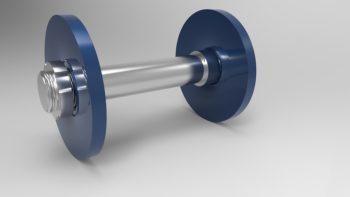
Strength training and the aging brain

Brain muscle mass and lesions
Cognitive function and muscle mass tend to decline, with aging. Rather than shrinking like muscle, however, the brain develops small holes in the white matter of the brain. These holes are referred to as “lesions” which affect the way the various parts of the brain interact with one another.
These types of brain lesions are typically found in late middle age. During this time, most people don’t notice anything in the way of cognitive decline, even when the lesions are visible on the brain scan.
University of British Columbia study results and beyond
According to some sources, exercise can help the brain to become healthier. In fact, one study revealed that moderate aerobic exercise, such as walking or jogging, increased the amount of gray matter in the brain; the area involved in the processing of information. Another study showed that there was no connection between the degree that a man (or woman) exercises and the number of lesions and cognitive decline suffered, as a result of aging.
Strength training, such as that gotten from weight lifting, has been shown to improve cognitive function in aging men and women. Scientists working out of the University of British Columbia examined the role that strength and resistance training had on the development of the white matter brain lesions. They studied 54 individuals between the ages of 65 and 75 years, all of whom had brain scans showing white matter lesions through various types of strength training programs, including:
- Resistance training that occurred once per week
- Resistance training that occurred twice per week
- Balance and toning exercises that occurred twice per week
The study participants who did the resistance training took part in lifting free weights and did exercises such as lunges and squats as a part of their training. This built up muscle mass in those participants who especially lifted the free weights.
These study participants did the same exercises each time at a rate of once weekly or twice weekly, depending on what group they were in. Eventually, they worked up to doing two sets of eight repetitions, per set. They were allowed to increase the amount of weight they were able to lift as their muscle strength increased and their ability to lift heavier weights improved. They also were allowed to progress in the number and intensity of the squats and lunges they were allowed to do and were encouraged to practice lunge walking.
Participants were instructed to do the various kinds of exercises for a total of a year. The results were conclusive. Those who did strength training twice per week were found to have a lesser number of white matter lesions in their brain.
This suggested that the activities they did as part of their strength training had an effect on their brain, resulting in cognitive improvement. The study was performed on women exclusively, but the researchers felt that the same findings would hold true if men were to complete a similar study.
Study Conclusion
Researchers for this study concluded that some type of resistance training may be helpful not only to the cardiovascular system but also to the brain. With a reduction in the white matter lesions, the cognitive function of the individual subscribing to regular strength training would likely be improved, due to an increase in muscle mass.


